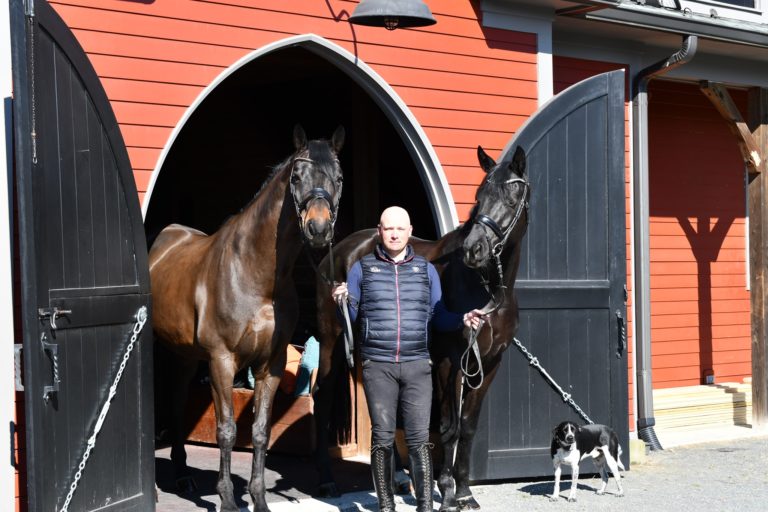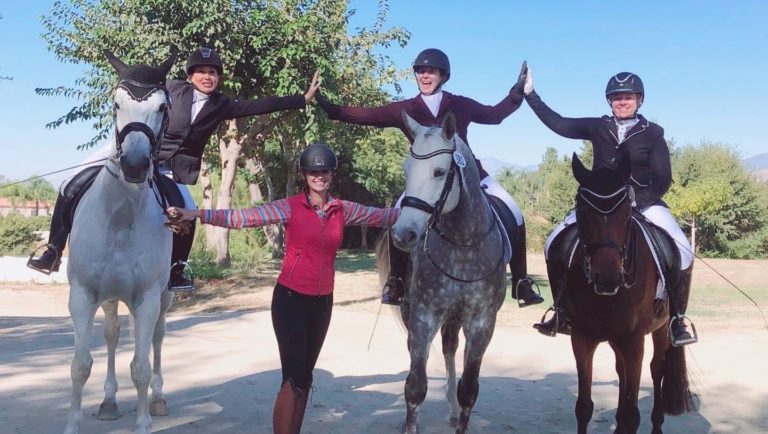Heather Sansom is the author of rider fitness ebooks Complete Core Workout for Rider, and a regular columnist in several equestrian publications including Dressage Today.?EquiFITT.com offers rider fitness clinics & workshops, Centered Riding? instruction, and convenient distance eCoaching for riders anywhere.? Subscribe to receive free monthly Equestrian Fittips, and download rider fitness eBooks at:??www.equifitt.com/resources.html

If I told you you’d be riding better with very little effort and no money involved, wouldn’t you go for it?
I had the privilege this month of working with some riders participating in a clinic with U.S. Olympian Steffen Peters. Aside from some videos I have seen of Reiner Klimke, I don’t think I’ve observed many riders with such correct posture. You may recall a recent article in Dressage Today on Mr. Peters’ personal training workout (March 2009). As a trainer, I paid close attention to that article and also to his comments during the clinic. He stressed the importance of the lower abdominals for maintaining correct pelvic alignment so that your weight is balanced correctly on your seat bones, allowing you to use your seat effectively. (I’m sure you haven’t missed the emphasis on half halts in recent editions of DT.)
To keep your core strong enough to sustain your posture throughout your ride, it’s really important to do more than just ride. What I’ve noticed in my personal training practice is that it does not actually take much time to maintain a very strong core once you have it.
Building a strong core does take time, though, and needs to be done in small amounts. Because your core is, well, at your core, you build its strength and stamina from the inside out. It may take you months to acquire a six-pack, but you can ramp up to noticeable improvement in just a couple of weeks. That’s good news because, now that we’re in full swing of the horse show season, you need to know what you can do to improve your stamina in time for the championships–when it’s going to really count.
Analysis
The rider in the photo here is a young client of mine who is competing to get listed to the Junior Rider team. She is a very serious rider with exceptional technical skill. But, she is only 15 years old, and photos from my assessment of her ride provided a perfect illustration of what happens when a rider has weak lower abdominal muscles. You can see that her pelvis rolls forward a bit, pulling her belly a little forward. Biomechanics are causing her legs to shift forward a bit as a result, and she spends much of her ride trying very hard to get them back again. Second, her shoulders lean back to compensate for the forward tendency at her lower back and pelvis. Effectively, she has lost the secure base directly above her seat bones, which is needed to do a proper half halt or a driving aid.
You can see that the biomechanics of the situation include her horse: his nose is pointing down almost directly on the same line her shoulders have created by leaning back. She has created pull/lean balance through the reins, and her pelvis’ rolling forward further drives him onto his forehand. Her legs are relatively ineffective because they are creeping up to his shoulders. (It is almost impossible to get your horse ahead of the leg when your legs are ahead of most of him.) Her horse is quite large, especially in comparison to her body size. So, when he gets tired or lazy and bears onto the forehand, she does not have the strength to maintain the self-carriage she wants him to have.

Solution
As a younger rider, she has a number of aspects to her exercise program. But, a large segment of it is devoted to lower abdominal strength, which will help her to straighten her body. She will use stronger lower abdominals to create more alignment from hip to heel, and more strength for half halts and holding her posture when her large horse wants to bear onto his forehand. Incidentally, the same exercises that build lower abdominal strength also seem to work the lower back area. I have not met a rider with weak lower abs who did not also have a weaker lower back. Doing exercises for this area, you want to feel a burning or fatiguing sensation but not sharp pain. If that occurs, cease the exercise and consult a physiotherapist or your doctor.
Unlike strength training for other areas of your body, core work can be done almost daily, as long as you do not overdo it. In fact, doing your core work at least five days a week will really accelerate your results, and it will only take a few minutes a day with no equipment.
Exercises
Three of my favorite exercises for working the lower abdominals as well as other areas are the bicycle crunch, V-sit (from Pilates) and full body curl. None of these involves a full sit-up and are easy for most people, even those with back problems.

Start with one set of 20 repetitions of each exercise. Work your way up to being able to cycle through up to four sets of each exercise in one workout. All begin with you lying on your back on the floor.

1. Full Body Curl: This is a nice warm-up abdominal exercise that gets you in touch with your upper, middle and lower abdominals all at once. Start with your knees bent up and feet flat on the floor like you are about to do a sit-up. Then, as you lift your head and shoulders off the floor, bring your knees in. Put your feet back on the floor as you lower your head to the floor again. For a tougher variation, keep your legs straighter or straighten them out as you lower them to the ground. The straighter your legs are, the more you will be engaging your lower abdominal muscles. Ideally, you should be able to perform at least 30.
2. Bicycle Crunch: Raise your legs to about 45 degrees from the floor. Bend one knee while keeping the other straight. At the same time, lift your shoulders and head off the ground while twisting to touch your opposite elbow to your knee. I consider one rep to be one of each side–or a pair. You should be able to do 20 pairs. (For a harder variation, lower your legs to just above the floor.)
3. V-sit: By now, your whole abdominal area should be feeling it. Finish yourself off with a static or isometric exercise. (An effective abdominal workout includes both isometric and dynamic exercises.) Hold your legs at about 45 degrees to the floor–or lower–and lift your arms and upper body off the floor. The more directly above your shoulders you place your arms, the heavier they will be and the harder the exercise will be. In this posture, pulse your hands up and down rapidly for about 30 counts.



Heather Sansom owns Equifitt.com Equestrian Fitness, offering personalized coaching through clinics and convenient online coaching available anywhere. She also offers a free monthly fittips newsletter and new e-books, Complete Core Workout for Riders and Handy Stretching Guide for Riders, at Equifitt.com.











